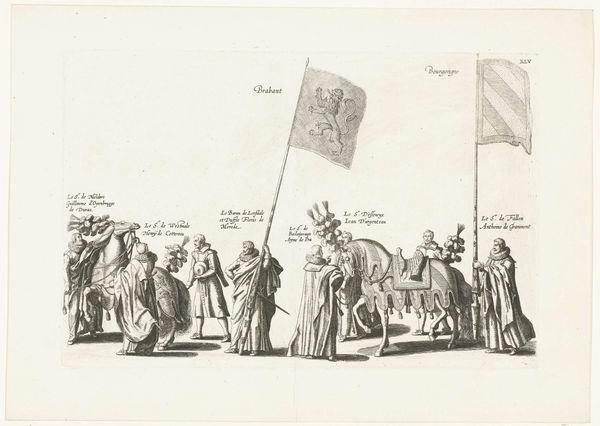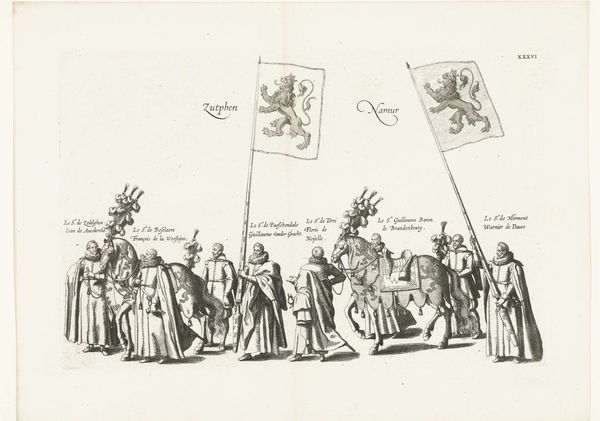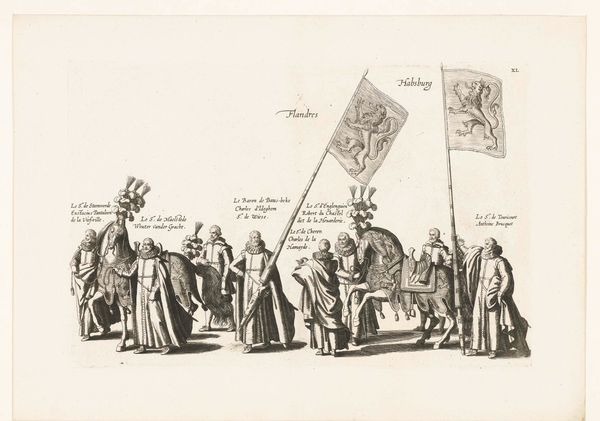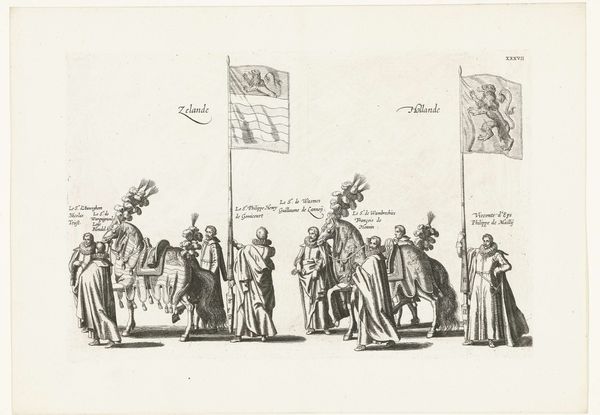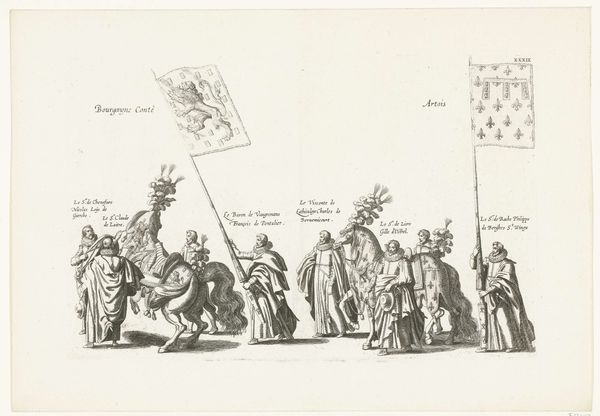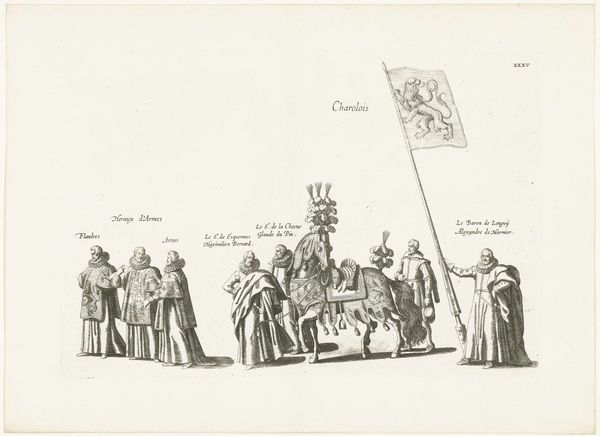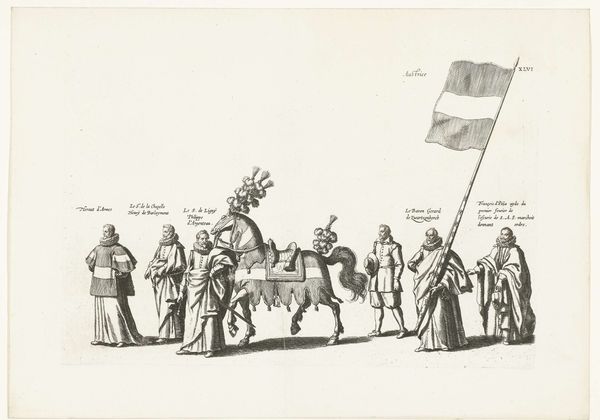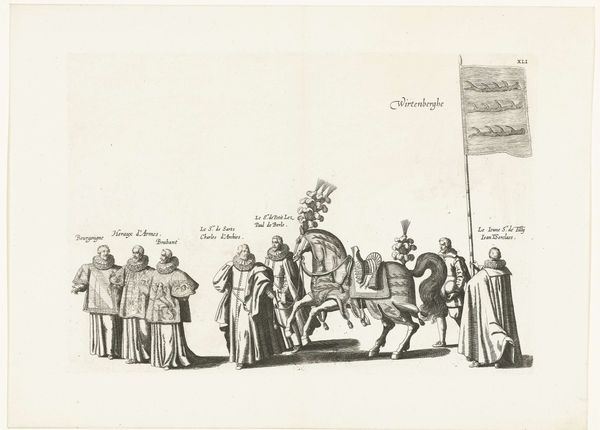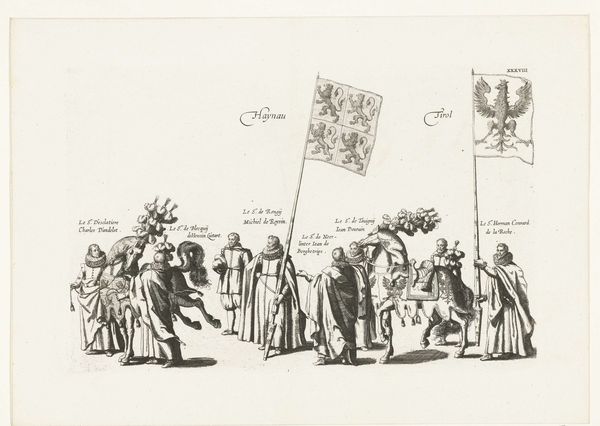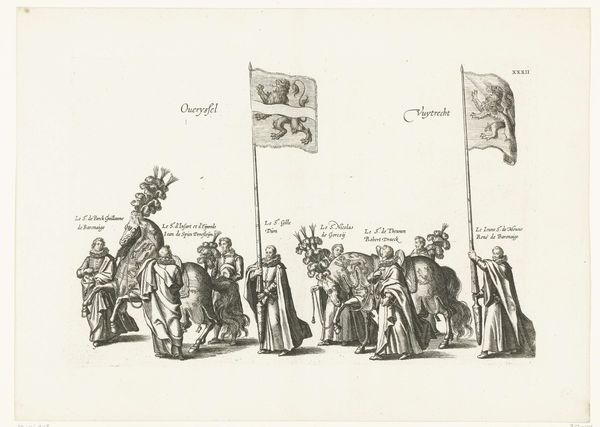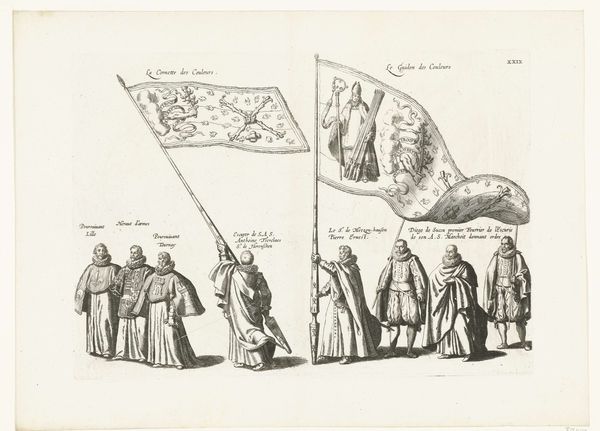
Begrafenisstoet van aartshertog Albrecht (plaat XXXIIII), 1622 1623
0:00
0:00
cornelisgallei
Rijksmuseum
drawing, print, ink, engraving
#
drawing
#
baroque
# print
#
old engraving style
#
figuration
#
ink
#
pen-ink sketch
#
line
#
history-painting
#
engraving
Dimensions: height 250 mm, width 378 mm
Copyright: Rijks Museum: Open Domain
Curator: Here we have Cornelis Galle I's "Funeral Procession of Archduke Albrecht," dating from around 1623. It’s currently held at the Rijksmuseum. A fascinating scene, rendered in meticulous detail using pen, ink, and engraving. Editor: My first impression is somber elegance. It feels quite formal and controlled, even with the dense lines created through the printmaking process. You can see the individual marks the artist made. What's most striking is the level of intricate ornamentation applied even to a funerary event. Curator: Absolutely. Albrecht was a key figure; his death marked a significant turning point. Note the flags—visual shorthands displaying allegiances and territories. Lions, castles... powerful imagery meant to immediately communicate status and dominion in this symbolic parade. The image speaks volumes of how death was leveraged to convey power, in life, and afterlife. Editor: Indeed. And the clothing. Notice the voluminous cloaks and the somber expressions of the figures involved. The details imply a significant outlay of resources. Also, looking closer at the horses, notice the ornate coverings; it goes beyond function to become a demonstration of wealth, really highlighting the cultural role that extravagance plays here. What was the role of this print? Curator: This work belongs to a tradition of memorial prints. Remember that such prints circulated information widely. As a portable image, it allowed people who were not able to be at the funeral a form of participation in the event and promoted the importance of his reign to people even beyond his lands. And let's remember, images like these shaped historical memory. Editor: That brings me back to those fine lines. When viewing something as precise as an engraving, one begins to think about the manual labor involved, about production—the cost, distribution. This was about disseminating an idea as much as preserving a memory, through careful manipulation of materials and the labor force involved. Curator: I agree completely. It highlights that tension, doesn't it? The intersection between spiritual mourning and the very tangible demonstration of political might. What lingers with me is the powerful enduring symbolism; in such visual languages one can come to a unique understanding of culture and historical consciousness. Editor: For me, I am left with questions about access and labor—who participated in both making and consuming this kind of work, and what tangible effects it would have had on their lives at that moment. Thank you for taking the time to look at the material and political aspects in this way.
Comments
No comments
Be the first to comment and join the conversation on the ultimate creative platform.
